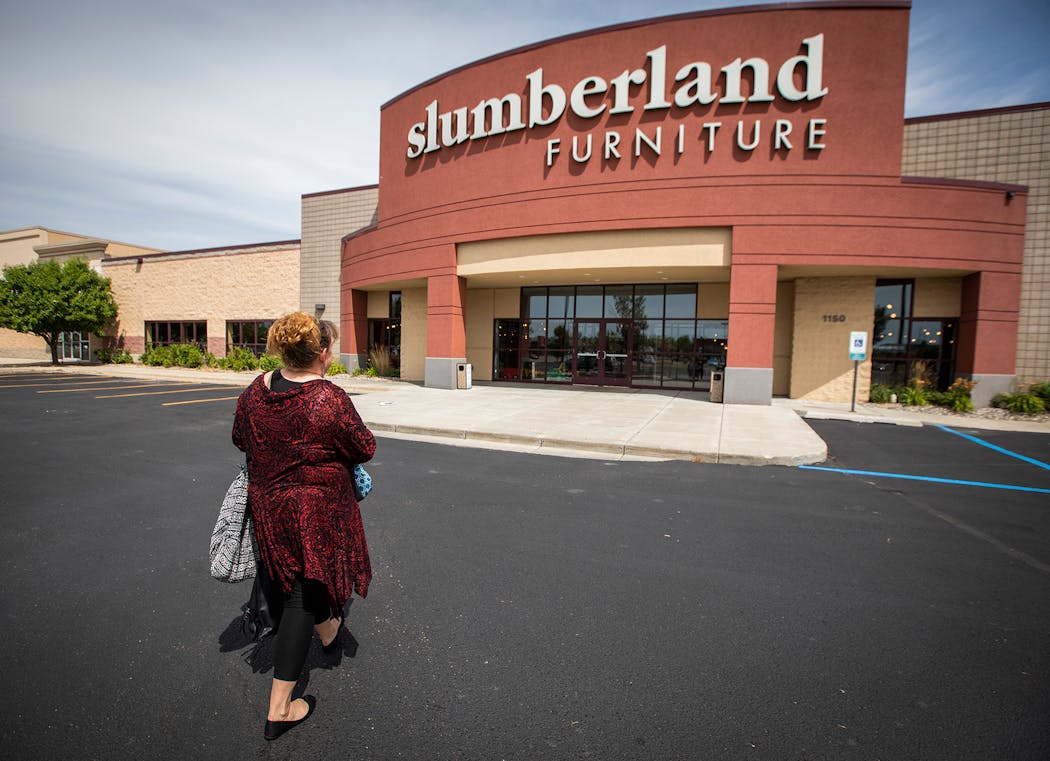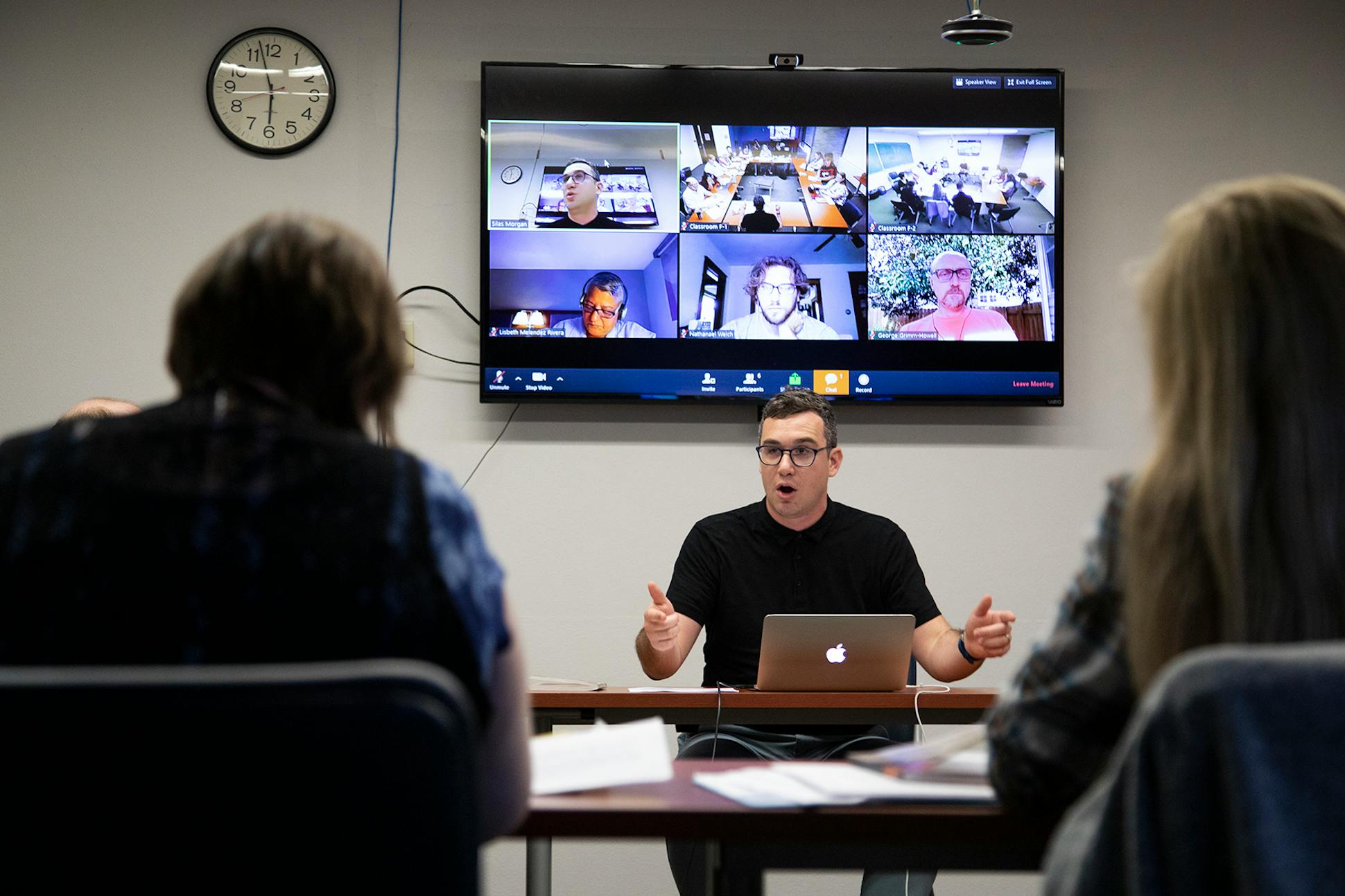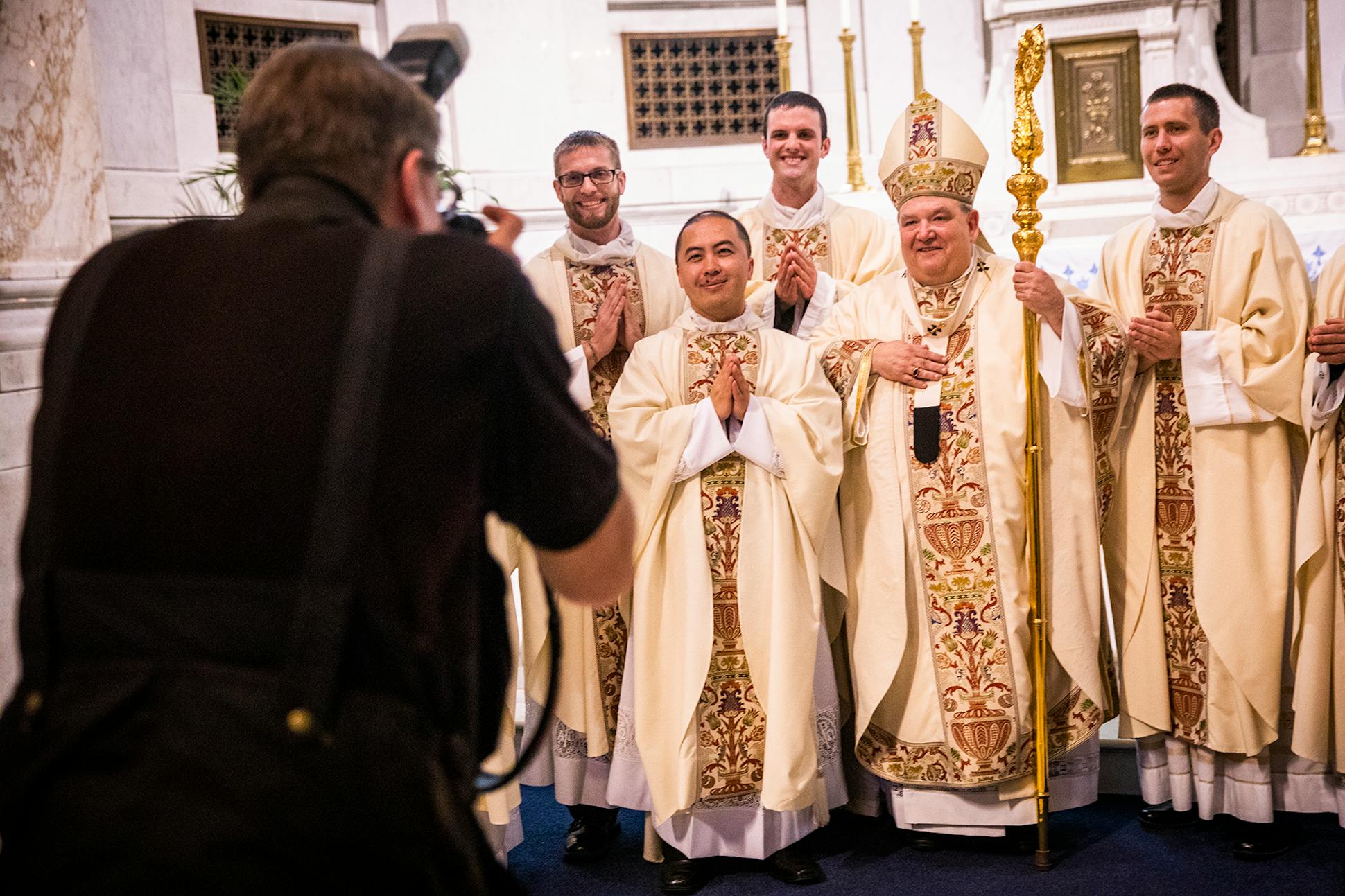Michele Jenson is still in seminary, but the stark shortage of pastors in rural America is putting her on the fast track to the pulpit.
She has already served as temporary minister to three churches in northwestern Minnesota, and she is interning at another congregation this fall whose minister retired — with no replacement in sight.
About the series This is the second in an occasional series about Christianity at a crossroads — a time of unprecedented decline in church membership and a changing future for the faith. Part 1: As Christian denominations decline and churches close, a way of life fades.Part 3: The fastest growing religion is "none".Part 4: Churches sow seeds for future revival.
Jenson is scrambling between churches at a time when steep declines in attendance and growing apathy toward organized religion are reshaping the role of a pastor. The career she's embarking on will bring profoundly new challenges, and less financial security, than that of generations of clergy before her. So, after leading the final hymn at a recent Sunday worship, Jenson drove to her home in Moorhead, changed from clergy robe to stylish shirt, and headed to Slumberland Furniture for a gig that supplements her full-time job as a university registrar.
"A minister's life," she said, "is a lot different than it used to be."
Clergy could once assume a long career as a full-time pastor, living in parsonage near the church, leading a growing and sometimes adoring flock.
Today the average church in the United States is shrinking, as are church budgets and full-time jobs. It means there are fewer recruits willing to be pioneers in a new spiritual landscape that requires them to juggle faith, fundraising and Facebook.
"It's not enough to be a good preacher anymore," said Jenson, relaxing between jobs. "With people not coming to church as much, you're constantly trying to stay connected to your congregation, showing up at school events, community events. And in bigger cities, they need marketing [skills] and social media."
Fewer hearing the call
The unchurching of America over the past two decades has been gradual but unrelenting. Baptisms among Minnesota Catholics and members of the Evangelical Lutheran Church in America (ELCA), Minnesota's largest Protestant denomination, have plunged about 40 percent since 2000. A record 1 in 5 Americans now reports no membership to organized religion, according the Pew Research Center. The average Sunday church attendance is now fewer than 100.
Pastors and priests are among the casualties. One in four of the 9,100 churches in the ELCA can no longer afford a pastor. That's the same for the nation's 17,100 Catholic parishes, according to Center for Applied Research in the Apostolate (CARA).
Church leaders now are being taught to be "entrepreneurial," and "innovative," to know PayPal as well as they do the Gospel of Paul.
"We're all asking: How do you creatively engage in the community around you when they don't necessarily care about the church anymore?" said Kyle Roberts, vice president of academic affairs at United Theological Seminary in New Brighton. "It requires a new mind-set and training."
Fewer men and women are willing to take up the calling. The ELCA, for example, reports that 3,661 pastors have retired since 2010, but only 2,241 minsters were ordained.
Three out of four of Minnesota's 962 Catholic priests are now classified as retired or disabled, and not working full time, according to CARA. Nationally, 60 percent of Catholic priests fall into that category.
The looming shortage of clergy, particularly Catholic priests and those serving rural America, means some juggle duties at as many as four congregations that can't afford a pastor of their own.
Other ministers, unable to patch together a living out of part-time and lower-paid jobs, moonlight as Uber drivers, teachers, musicians, communications directors and Zumba instructors, say religious leaders.
More than a third of clergy positions — full- and part-time — in Minnesota pay $34,100 a year or less, according to the U.S. Bureau of Labor Statistics. The median wage was $47,000.
Beyond preaching
Bishop Richard Howell has been preaching 30 years at Shiloh Temple International Ministries, a Minneapolis congregation started by his grandparents in 1931.
He fondly recalled the days when people rarely missed a Sunday, often sitting in the same pews week after week. They belted out the gospel hymns, dutifully dropped donation envelopes into the usher basket, and displayed an unwavering faith in Jesus.
"And that was with no marketing," he said.
Today, it takes a lot more to get people through the doors — professional musicians, dance and theater ministries, a child care center — and Howell pours himself into sermons he hopes will inspire. Yet there's no guarantee those who stop in will join the church.
Meanwhile, many visitors show up midweek, desperate for help with rent, food, child care.
It's a common challenge for pastors who balance serving the loyal, attracting the new, and providing charity. Even so, Howell, like most clergy, still loves his congregation and his work.
That feeling of both satisfaction and tension in their work was reflected in the 2017 State of Pastors survey conducted by Barna Group and Pepperdine University in Malibu, Calif.
The report, based on interviews with 1,500 Protestant pastors, showed that more than 90 percent reported a good overall quality of life, and spiritual well-being. But 75 percent reported feeling "emotionally exhausted" frequently or at times. And more than half of pastors at churches with fewer than 250 members reported episodes of depression.
ELCA Bishop Lawrence Wohlrabe knows a lot about small churches. He oversees the ELCA's northwest corner of Minnesota, with 228 congregations, 39 of which are in need of a pastor.
From his desk in Moorhead, he scrutinizes spread sheets, working as a matchmaker from a list of available clergy. Most candidates, he said, aren't interested in rural regions such as his, best known for its fields of wheat and sugar beets.
"I can start out with a list of 40 or 50 pastors, and I can whittle that down to single digits," Wohlrabe said. "This is the tightest supply of pastors relative to parish openings that I have ever seen."
To work around pastor shortages, most mainline Protestants are giving special permission to qualified lay leaders to lead worship services and support congregations.
Though Jenson was still in seminary, Wohlrabe last year approved her as a "synodically authorized minister" at her longtime Moorhead church.
Jenson fits a growing demographic among today's generation of seminary students. She's in her second career. She's older than 50. She's a woman. And she's eager to become a minister, despite the challenging times.
"Through good times and bad times in my own life, I've always found strength in my faith," she said. "I want to share that with others, to let them know that's out there, that they're not alone."
Faith and finance
Pastors across the nation are heading back to the classroom to learn ways to navigate the shifting religious landscape. With so many churches downsizing, a priority is financial management.
The United Methodist Conferences of Minnesota and the Dakotas, for example, this year received a $1 million grant from the Indiana-based Lilly Endowment to boost its ministers' financial and management skills. Dakota Wesleyan University in Sioux Falls created the training.
At the first classroom session last month at a Sioux Falls church, 18 pastors gathered around a conference room table, jotting notes while listening to organizers. The upbeat group offered a glimpse into the vastly different face of the church in the 21st century.
There was the Rev. Tyler Sit, 29, who is creating a new kind of "church" without walls in south Minneapolis geared for young adults and focused on promoting environmental, economic and racial justice. It's part-time work, with a small budget but enthusiastic members. He also has side gigs as a nonprofit communications associate and a Zumba instructor.
Across the table was the Rev. Brenda King, 60, who blazes a trail each Sunday between four small churches in southwest Minnesota for services at 8 a.m., 9:30, 11 and 1 o'clock. She also contributes daily devotions for a local radio station, and volunteers as an Emergency Medical Technician. Her churches have buildings, but no phones, no staff — and one doesn't even have indoor toilets.
The Rev. Brooke Heerwald Steiner, 37, is the new pastor at United Methodist Church in Excelsior, an upscale west metro suburb on Lake Minnetonka. The church offers yoga classes, TED Talk discussion groups, Boundary Water trips for women, and workshops focusing on "how religion interacts with our world and our universe." She's looking for ideas to enhance the mix.
All want to learn to stretch and manage budgets, how to market and fundraise, how to recruit and support volunteers and staff.
"You don't want it to be all about the bottom line, because the bottom line is people," said Heerwald Steiner. "But everywhere you go — libraries, restaurants — people want more. That's the same with churches."
The Rev. Dwight Zscheile, a vice president at Luther Seminary, oversaw a separate Lilly grant this year to spark innovation among faith leaders. The longtime business model for churches is now being flipped around, he said, and clergy need to be prepared.
"We've been working as a nonprofit supported by donations," said Zscheile. "More churches will need to discover alternative streams of income, for the common good."
Seeking future leaders
Seminaries, the training ground for future clergy, are struggling against the tide. Over the past decade, full-time enrollment in theology schools nationwide dropped 50 percent, stabilizing only in the past two years, according to the Association of Theology Schools.
The five Minnesota seminaries accredited with the group saw their collective ordinations drop from 2,194 to 1,328 over the past nine years, according to association data. And they've made changes as a result.
Luther Seminary in St. Paul this year sold 15 acres of land and several buildings as it downsizes its campus. At United Theological Seminary in New Brighton, staff is preparing to move from their 50-year-old campus to the St. Paul area to cut costs and to get closer to potential students.
Bethel Seminary in Arden Hills, which restructured and ordered layoffs in 2013, this year announced a $6 million budget shortfall.
And at the St. Paul Seminary, just four graduates were ordained as priests this summer in a ceremony in the towering St. Paul Cathedral.
Dives in enrollment have led to spikes in creativity, and seminaries are now exploring ways to attract and retain students.
Across the country, seminaries now offer hybrid Master of Divinity degrees that mix online learning with intensive short courses on campus and virtual participation via large TV monitors in classrooms.
Catholics have by far the fewest seminarians stepping forward. Finding young men willing to become priests, and also pledge to a life of celibacy, has been a challenge. The number of young men kneeling before bishops at Minnesota ordination ceremonies has been flat — about 13 — for the past 20 years.
Archbishop Bernard Hebda, of the St. Paul and Minneapolis Archdiocese, would like to see more young priests, but isn't sure that will happen. So the church is responding by putting "great resources" into fortifying and retaining its clergy.
It launched a Clergy Support Initiative last year and created a program to help young priests transitioning from seminary to parish.
In August, the archdiocese is launching a new event for its youngest priests to develop a sense of fraternity and reinforcement in their work.
"There are high expectations placed on them by their parishes and the archdiocese for which they are not prepared in seminary," Hebda said.
Like the Protestants, Catholics increasingly are relying on lay leaders to fill duties once assumed by pastors. The archdiocese now has 181 permanent deacons, Hebda said. That's just short of the 210 full-time priests.
Hebda sees today's clergy environment as a challenge and an opportunity. "Every day is a new experience," he said.
Roberts, of United Theological Seminary, also sees opportunity — but not without some anxiety.
"We have been weaned from security … to a time of insecurity and vulnerability," said Roberts, poring over the seminary budgets last month. "The ability to rely on the old trusted institutions is no longer there. But we remember why we got into this vocation, which was not for a comfortable life, but for a life of service."

Meet the Athena Award winners: 103 female athletes honored by their schools
Hwy. 169 in northwest metro is closing this weekend for bridge demolition
Anoka expands downtown sip-and-stroll 'social district'
Pilot killed in Indiana plane crash was college student from Maple Grove




